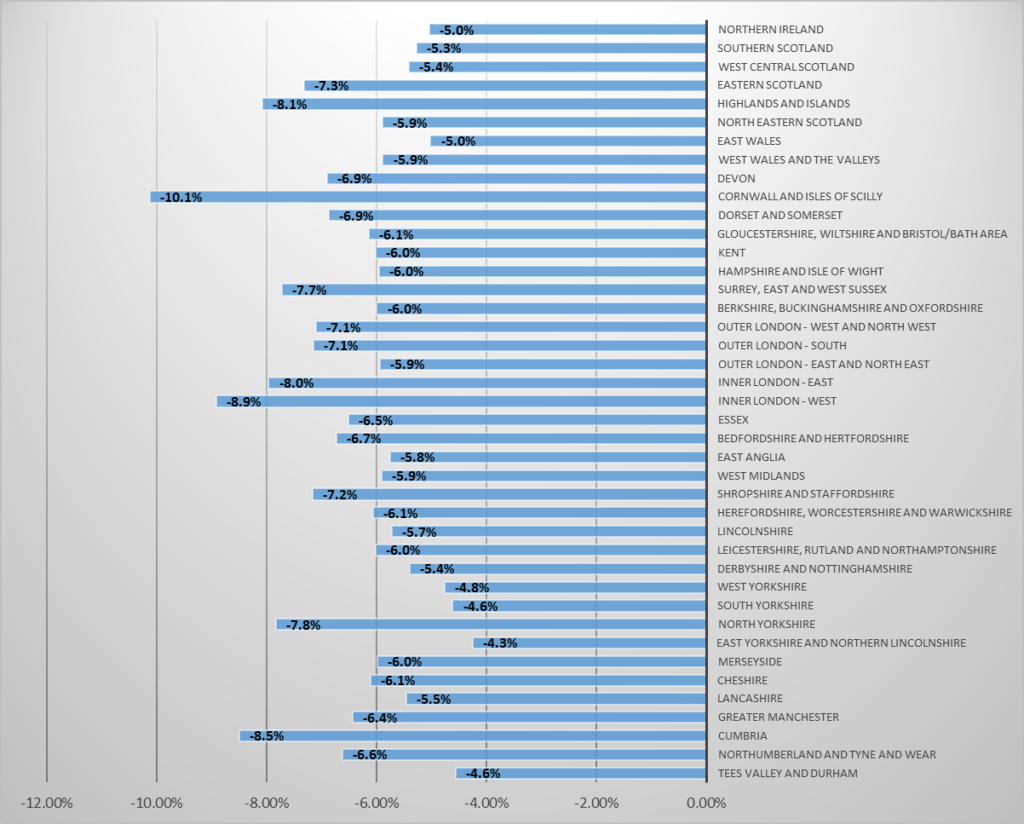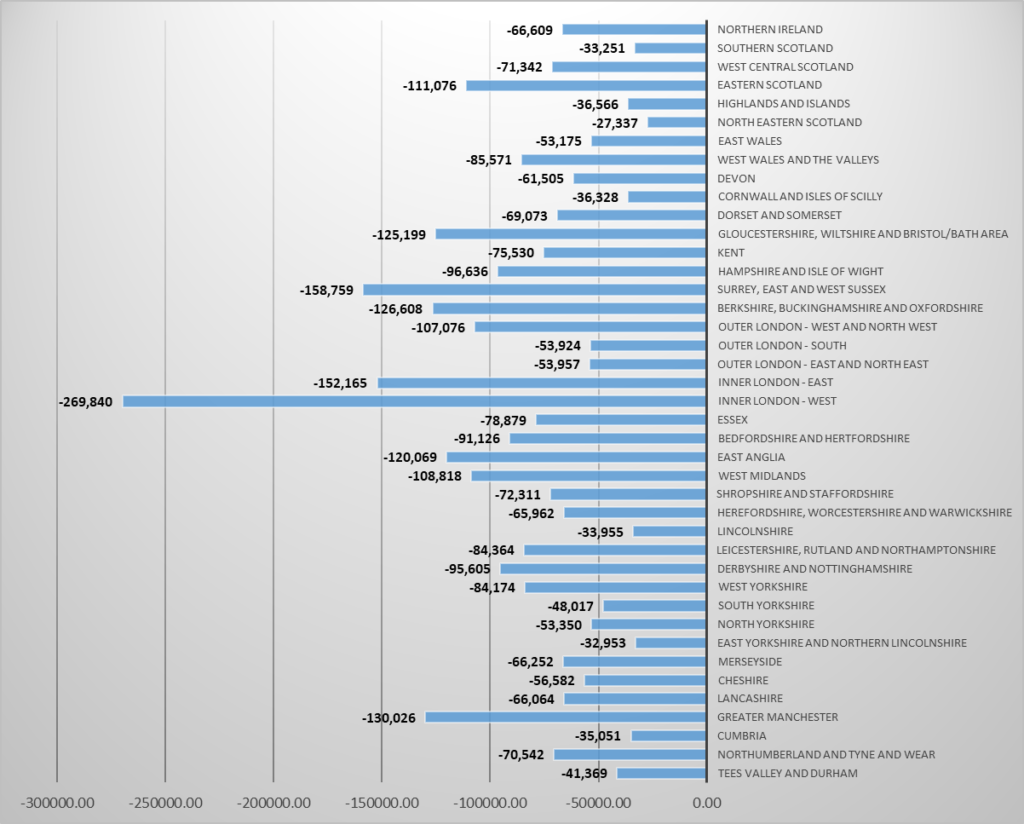 Dr Andre Carrascal looks at the impact the latest lockdown measures will have on sectors that have been forced to closed and how this will affect regions around the UK.
Dr Andre Carrascal looks at the impact the latest lockdown measures will have on sectors that have been forced to closed and how this will affect regions around the UK.
People in the UK are again facing a national lockdown and, like at the end of March, some sectors are forced to close in order to avoid gatherings and social interaction. The most important sectors in that face closure are Accommodation and Food Service activities (restaurants, bars, hotels, etc.) and Arts, Entertainment and Recreational activities (museums, sporting events, etc.).
To examine the exposure of different UK regions to these sectors shutting down, I am going to use the SEIM-UK Input-Output framework and apply the Hypothetical Extraction Method. The SEIM-UK model is a Multiregional Input-Output model for the UK with 2016 as the base year, developed at City-REDI, University of Birmingham.
For the UK as a whole, these sectors make up 6.6% of the total GVA and around 3.3 million jobs (11% of the total employment).
| Hospitality and Recreational activities
(Total) |
|||
| Initial change (millions of £) | Total effect (millions of £) | % change over total | |
| Final demand | -135262 | -6.50% | |
| Total gross output UK | -232954 | -6.66% | |
| Domestic production UK | -212547 | -6.73% | |
| Gross Value Added UK | -114855 | -6.59% | |
| Foreign imports UK | -20407 | -6.04% | |
| Jobs | |||
| Jobs UK | -3,306,997 | -11.06% |
As can be seen in Figure 1, some regions depend more on these two sectors than others do. Particularly, Cornwall and Isles of Scilly (10.1%), Inner London West (8.9%) and East (8.0%), Cumbria (8.5%) and Highlands and Islands (8.1%) are the ones with a larger GVA, directly and indirectly, involved in these sectors. The West Midlands appears in as an intermediate case with 5.9% of its total GVA depending on these activities. Out of the 41 UK regions, West Midlands would be in the 25th position of most exposed regions.

Figure 2 presents the number of jobs exposed to these sectors shutting down. The largest number of jobs affected is by far in Inner London West where both sectors, directly and indirectly, employ around 270,000 people. In the case of the West Midlands, 108,000 jobs are at risk with lockdown measure. In these terms, it would rank 9th among the most exposed regions.

Figure 3 shows the exposure of different types of occupations. The ones most affected are obviously Culture, Media and Sports related jobs (19.7%); Textiles, Printing and others (37.3%) (which includes workers in food preparation and hospitality trades); Leisure, Travel and related (16.0%); Other managers and proprietors (24.6%); and the Elementary Administration and Service occupations (28.0%). But, as Figure 3 also shows, all occupations are affected indirectly too.

In general, and this is something that is relevant for designing mitigation policies, low skilled occupations are more exposed to a shut-down in these two sectors than the medium and high skilled occupations. This leads to an increase in income inequality within the UK regions.

Find more about the UK regional economic exposure to COVID-19 in this SHAIO (Hispanic-American Input-Output Society) webinar.
This blog was written by Andre Carrascal Incera, Research Fellow, City-REDI / WM REDI, University of Birmingham.
Disclaimer:
The views expressed in this analysis post are those of the authors and not necessarily those of City-REDI / WM REDI or the University of Birmingham
